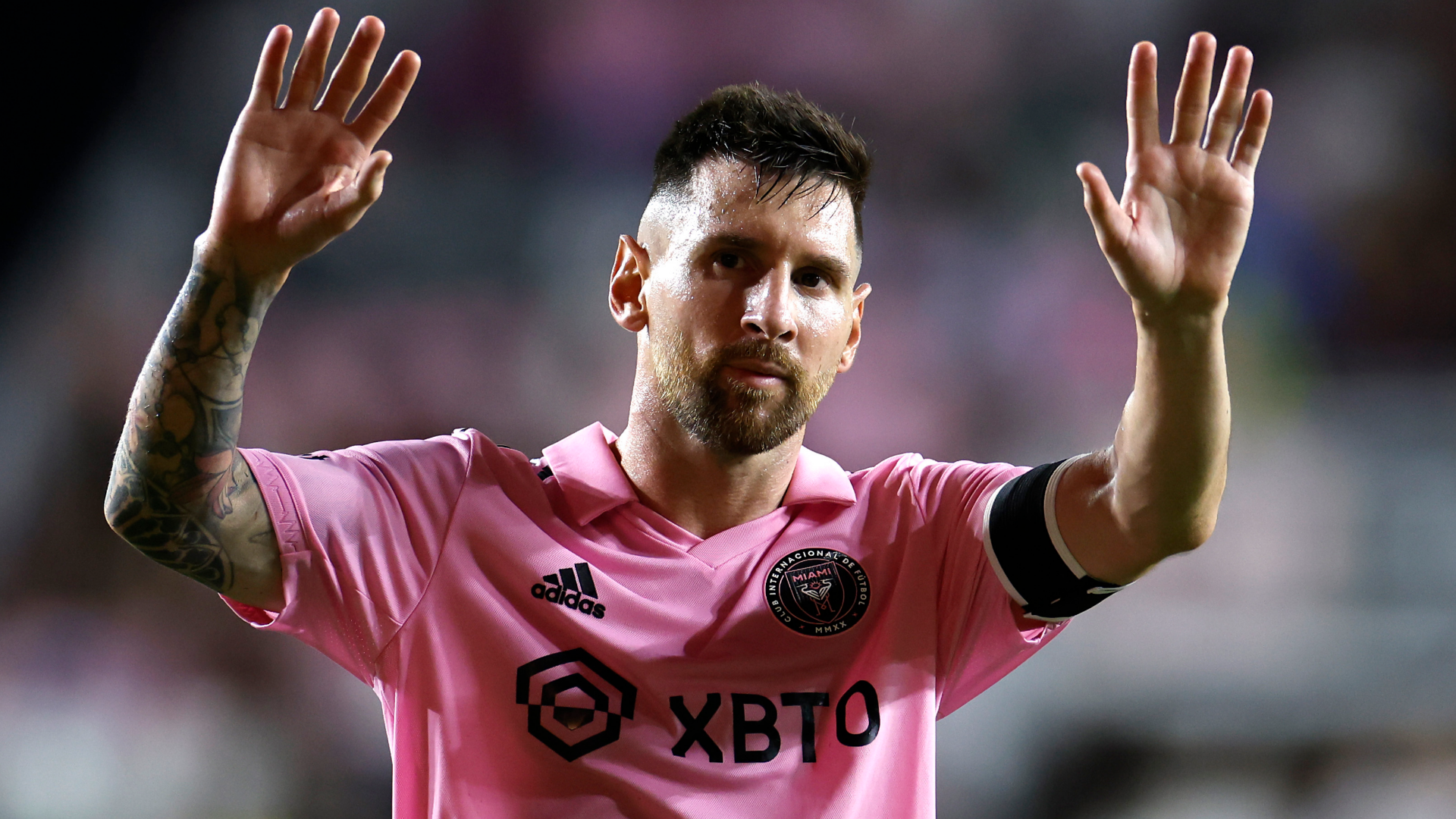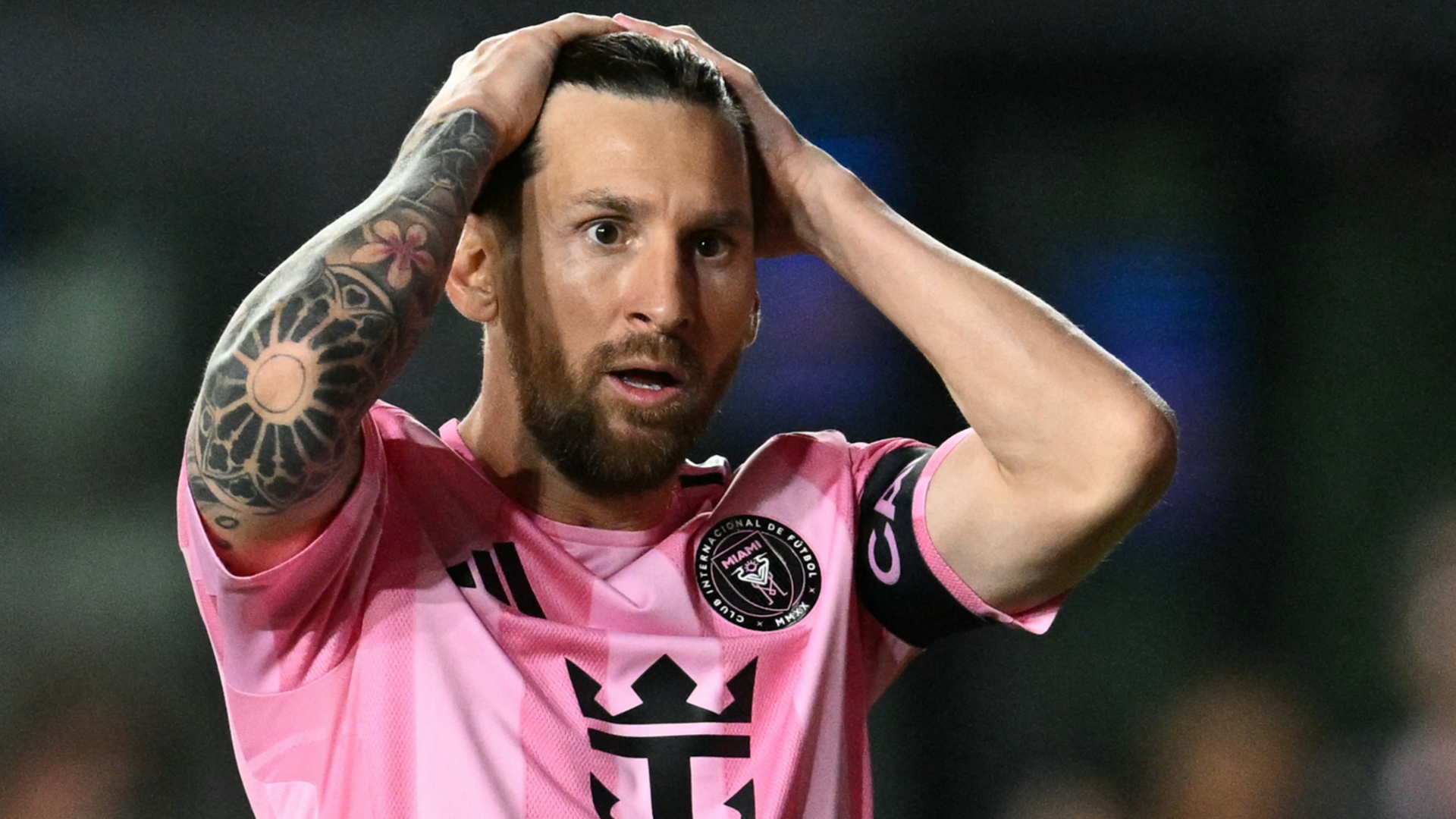How Miami became international soccer stars’ favorite vacation destination
If you’ve ever been inside an indoor soccer facility, you’ve memorized its characteristic soundtrack: the ricochet of the balls off the walls or pads, the hollers from teammates making a run up one side hoping for the ball, the general tenor of delight as players young and old lace up their boots to play.
On one typically sweltering summer day at Miami’s Urban Indoor Futbol, the noise didn’t reverberate. It was silent. The ball stopped rolling. Nobody shouted. Heads whipped. Some forgot to even breathe. That’s what takes place when one of the best players in the world must duck his famous towering 6-foot-5 frame just to fit through the front door.
On that day in 2010, Zlatan Ibrahimovic and some friends walked into the facility just 20 minutes north of South Beach looking to get some touches in. Owner Michael Athea perused through the field schedule as Zlatan leaned against the counter comfortably waiting.
Athea, a native of Autun, France, who moved to Miami 24 years ago, kept peeking up to make sure this wasn’t some hallucination. It wasn’t. Zlatan was there in his spot in Miami.
“I was not expecting this,” said Athea, who opened up the facility in 2007. “I was expecting to open a place for us, for soccer players in Miami. I didn’t realize this would be a big thing. Now, every winter break, every summer, every international break, we have players from all over the world.”
In the years since Zlatan bent over to get through into his building, Athea has hosted pick-up games for Paul Pogba, Antoine Griezmann, Alessandro Nesta, Paulo Dybala as well as Karim Benzema, Andriy Shevchenko, Blaise Matuidi, Kingsley Coman, Wilfred Zaha and more. The facility’s rise as a destination mirrors that of Miami itself; throughout the last 20 years, the city has swiftly become the premier holiday destination for the world’s most famous names in soccer. The reasons are as obvious as the Miami ocean water is blue.
Unlike being whisked away in a private car to avoid crowds in France or Spain, World Cup winner Griezmann can attend a Miami Heat game and be part of the fan experience rather than the focal point of it. It’s where Dybala can dine at outdoor cafes, unbothered by fans seeking a selfie. It’s where Pogba can rehabilitate an injury on a recreational football field in Flamingo Park for hours on end and avoid the paparazzi. It’s where Neymar can party in front of a barrage of flashing cameras and wear his sunglasses at night.
And it’s where Lionel Messi, because he is Lionel Messi, remains the exception to the rule even at his mansion in Miami where fans stand and sweat hoping for a glimpse at one of the greatest players ever. That might become more of a common theme in 2023 as The Athletic reported in late October that Messi might make Miami his full-time home after his contract at PSG expires.
“In Europe, they can’t have a life,” said Riccardo Silva, an Italian entrepreneur who co-founded Miami FC of the NASL in 2015. “In Miami, they are sometimes recognized but they can go around a lot easier.”

Paul Pogba meets up with the Miami Heat’s Jimmy Butler (Issac Baldizon/NBAE via Getty Images)
The unrelenting demands of club and international soccer generally allot only a month every summer for those playing in the best leagues in the world to enjoy downtime. It’s when they get to not think about donning training bibs or small-sided games or traveling by bus or train or squeezing in as many as three matches in a week. In June and July, when the temperatures in South Florida are as miserable as they can be, this generation of the sport’s most noteworthy names descend on the city to relax, to party, to drink, to dance, to watch their kids play in the sand, to be just someone on vacation.
With icons putting down roots in town each summer, soccer as a whole has exploded in popularity in South Florida over the last decade. The long-awaited arrival of David Beckham’s MLS franchise, Inter Miami, has constantly become the hot stove link to icons like Messi and Cristiano Ronaldo when their time starring in Europe comes to an end. And various club and international friendlies have packed stadiums around town during preseason tours.
Charlie Stillitano, an American sports executive who has helped broker some of the more high-profile soccer events in the country in recent years, remembers his first year as general manager of the now-defunct New York/New Jersey MetroStars in 1996. Back then, to no surprise, Los Angeles was seen as the primo desired spot for the league’s high-profile imports. Stillitano, who grew up in New Jersey, remembers the heyday of the superstar-laden New York Cosmos with Pele and Franz Beckenbauer, all of who desired the limelight of the city that never sleeps.
Now? It’s the Magic City.
“I am assured by young, hip people — much more hip than me — that it is the place to be because of the lifestyle,” said Stillitano. “I can’t tell you how many guys in Europe have asked me over the last decade, ‘When is David Beckham opening up his franchise? I want to go there.’”
Stillitano organized what is described by those around Miami as the crown jewel soccer event when Real Madrid and FC Barcelona played an El Clásico at Hard Rock Stadium in Miami in July 2017 as part of the International Champions Cup.
“It stoked the fire like nowhere else,” said Ray Hudson, radio host and TV commentator who first moved to South Florida in 1977 to play for the Fort Lauderdale Strikers. “That was probably the greatest event. It was like, ‘Oh my god. This is it.’ There was a time when we played against the Cosmos with the Strikers in New York City and we sold it out. That day was a big bang. This day was an even bigger bang than that.”
In the years since that preseason El Clásico, Messi and other prominent players have invested heavily in Miami real estate.
The Miami trend, however, started in the late 1990s and early 2000s with the legendary AC Milan teams of that era. That team’s stars, including Paolo Maldini, Alessandro Nesta, Gennaro Gattuso, and Massimo Ambrosini, began visiting Miami together during that time, in what Silva said was an effort to get some time off out of the European spotlight. Maldini and Nesta liked it so much that they bought homes and still spend time there. Nesta was the first head coach of Miami FC and remains in Miami often.
“Maldini and Nesta were the pioneers of this,” Silva said.
Hudson’s front-row view of all this the last 45 years still causes him to laugh hysterically. After all, he still remembers being back home in England at a bar in Newcastle when he was introduced to a woman who lived in California. She busted out laughing herself when Hudson told her he lived in South Florida, telling him, “that’s where all the geriatrics go.”
It’s taken time for soccer to fully win over Miami. Hudson has seen the sport in his adopted hometown struggle. He was the manager of the defunct Miami Fusion which folded in 2001. At the 1994 FIFA World Cup, it was Orlando, not Miami, that was named a host city in Florida. That will be swapped at the 2026 World Cup in four years. The attention that helped Miami evolve as a city for major events came when LeBron James announced his decision to join the Miami Heat. That changed the paradigm. In the years since, massive events like the Breeder’s Cup and Formula 1 races have made stops more frequent in Miami, too.
It’s a town that demands attention — because at every other turn something can catch your eye.
“It’s a very elusive type of thing to put into words or even describe verbally when you’re talking about how much these players are in these pressure cookers all around the world,” Hudson said. “Sure, they can go to Monaco and they can go to Ibiza, but it ain’t the same as coming here. They can enjoy the sports here and look at it as an observer. You see cutaways of these guys at events and they look like kids at Disney World. They’re enjoying the show now. They’re removed from it. They’re just fans.”
Miami is also where players can experience an intersection of various cultures unlike anywhere else in America – and perhaps the world at large. It’s where European and South American flair collide. According to the World Population Review, Miami is the most diverse city in the world based on the population of its foreign-born residents.
“Miami,’ Athea said, “is not America.”
Stillitano said any time he’s involved with organizing a major European club’s preseason prospects in the U.S., the manager will almost immediately balk at the idea of New York, Boston, Washington D.C. and other options. That is, until Miami is thrown into the mix. They say yes so fast they cut him off.
“As my friends at Real Madrid say, ‘We don’t need to speak English when we’re in Miami,’” said Stillitano.
Athea said some French TV stations have taken notice of Pogba, Coman, and more French national team stars dropping in to play in recent years, so much so that producers have already contacted him about putting up their set inside his facility for the 2026 World Cup. The tournament returning to the States is constantly a topic of conversation around the fields. It’s undoubtedly a topic among players, too.
“I think this World Cup in 2026 couldn’t exist in the U.S. without Miami,” Silva said. “It’s mutual.”
Hudson said there is a vibe in Miami that weaves its way into the DNA of these famous players. It is contagious, he said. Part of it is desired anonymity, sure, but in Miami, they feel like they can pick and choose when they want to be in front of the camera as opposed to everywhere else, where that’s generally out of their hands. After the U.S. men’s national team was eliminated in the Round of 16 at this winter’s World Cup, players scattered around the world for down time. Captain Tyler Adams went to Thailand. Yunus Musah went to Paris.
Stars Christian Pulisc and Weston McKennie chose Miami, where they were courtside for Miami Heat games and were recognized for their achievements in front of an adoring crowd.
In Miami, the sport’s stars are part of the scene as opposed to the main attraction.
“It’s fun to relax here but … the only problem we’ve got are the iguanas,” Hudson said. “They’re as dangerous as Messi.”
(Top photo: MEGA/GC Images / Getty Images)



